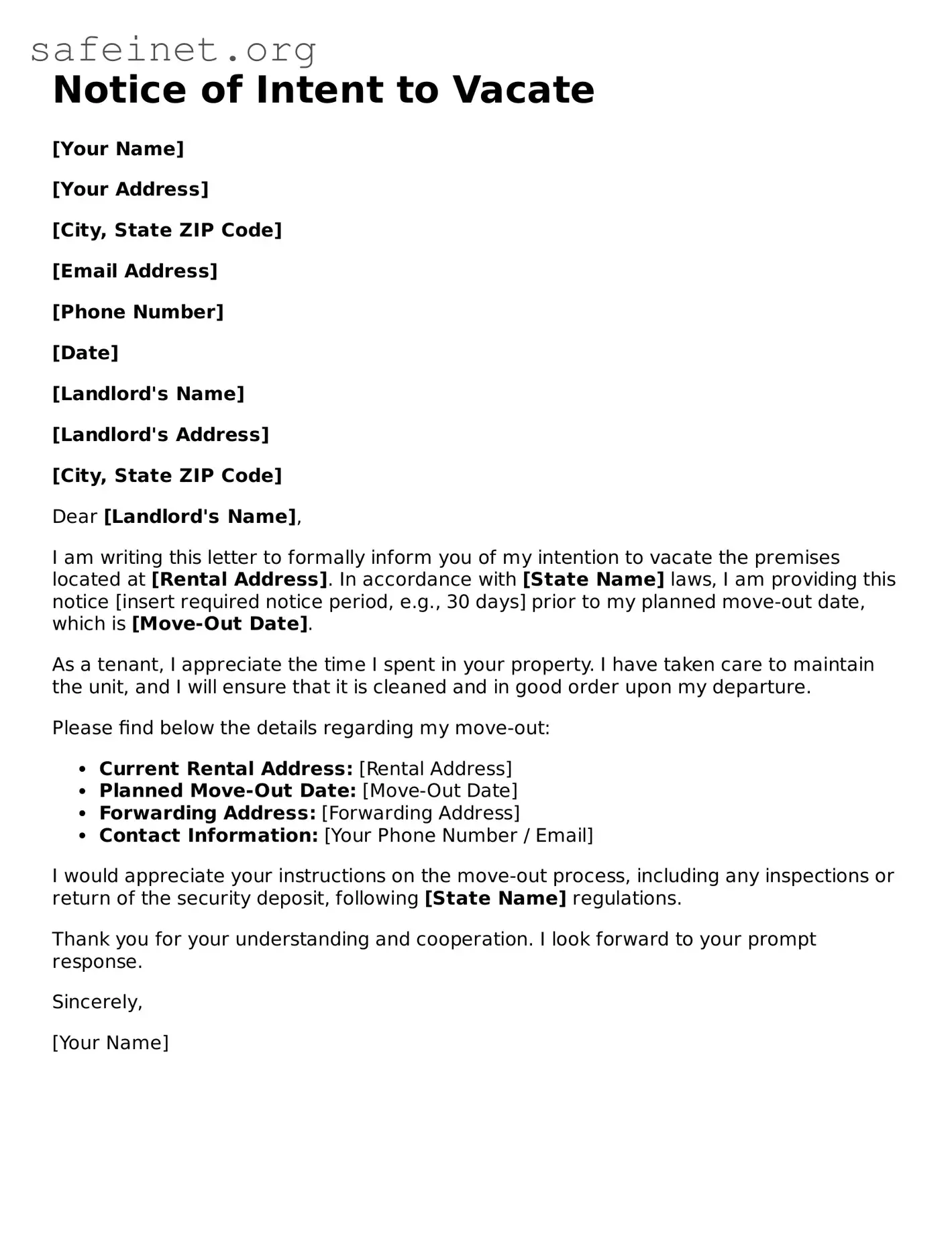What is a Notice of Intent to Vacate form?
A Notice of Intent to Vacate form is an official document used by tenants to inform their landlord or property management company of their intention to leave a rental property. This form typically includes key details such as the tenant's name, the rental property's address, and the intended move-out date. Sending this notice is an essential step in ensuring a smooth transition from a rental unit.
Why is it important to submit a Notice of Intent to Vacate?
Submitting a Notice of Intent to Vacate is vital for various reasons. It formally notifies your landlord that you plan to move out, allowing them time to make necessary arrangements for new tenants. Additionally, providing this notice can help protect your security deposit and prevent potential disputes regarding rental obligations. It's a proactive measure to ensure that both parties are on the same page.
How much notice should I give before moving out?
Typically, a notice period of 30 days is standard; however, it can vary based on your lease agreement. Always check the terms of your lease to see if a longer notice period is required. Some leases may stipulate 60 days, especially in specific types of housing or under local laws. Providing the correct amount of notice helps facilitate a flawless transition for everyone involved.
Do I need to provide a reason for vacating?
In most cases, you are not required to provide a reason for vacating. The Notice of Intent to Vacate is primarily a notification, and your decision to move can remain private. However, if you are breaking a lease early, it may be beneficial to communicate your reason to maintain a good relationship with your landlord.
Can I withdraw my Notice of Intent to Vacate?
If circumstances change after submitting your notice, you might wonder if it's possible to withdraw it. Depending on your landlord's policies and local laws, you can request a withdrawal. Engage in open communication with your landlord. If they are amenable, providing a written request can help clarify your intentions.
What if I forget to send the notice?
Forgetting to submit a Notice of Intent to Vacate can lead to complications, especially regarding your security deposit or additional rent. If you realize you've missed this step, act quickly. Contact your landlord as soon as possible to notify them of your intention to leave, and follow up with a written notice. The sooner you act, the better the chances of resolving any issues that may arise.
What happens after I submit my Notice of Intent to Vacate?
After submitting your notice, your landlord may respond with confirmation. This confirmation might include information about the move-out process, an inspection, and the return of your security deposit. Expect to engage in further communication regarding these matters. This phase is crucial, as it allows for the smooth move-out process and settling any remaining obligations.
Are there any consequences if I do not submit a Notice of Intent to Vacate?
Failing to submit a Notice of Intent to Vacate could result in being held responsible for additional rent costs. Your landlord may interpret a lack of notification as an intention to continue your lease. This scenario could lead to complications in recovering your security deposit or even legal issues if the lease terms are misinterpreted. Taking the time to submit your notice protects your rights as a tenant.
